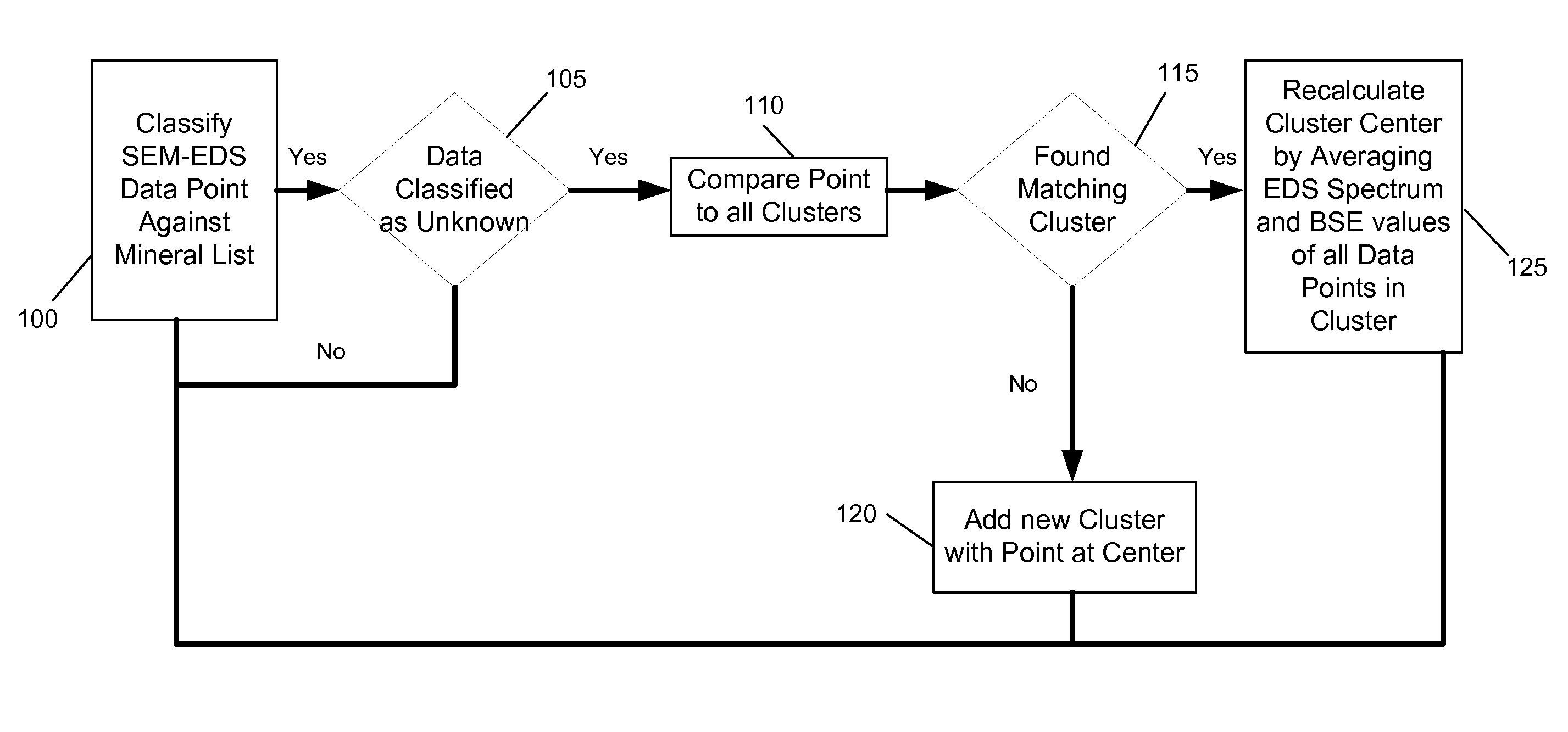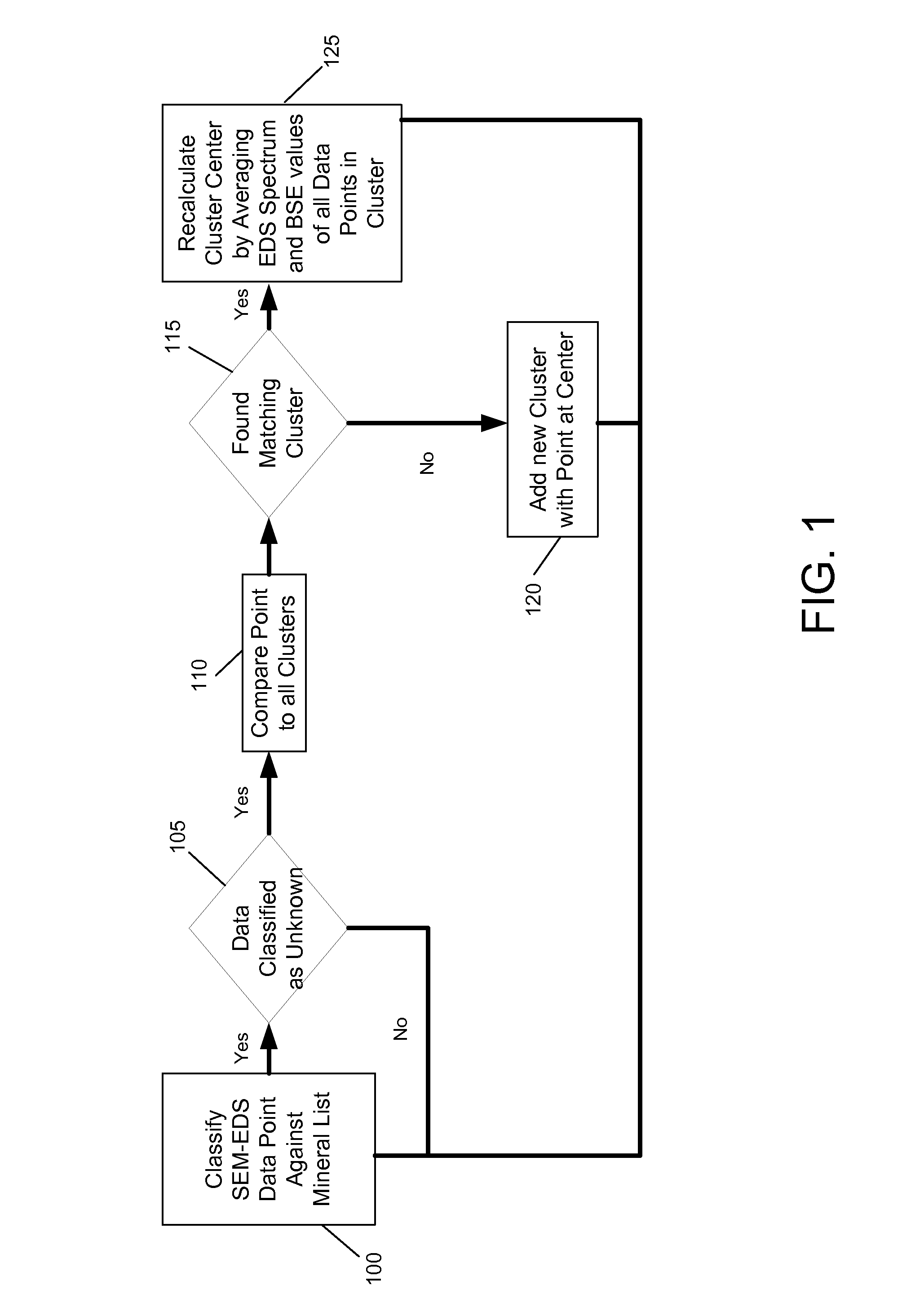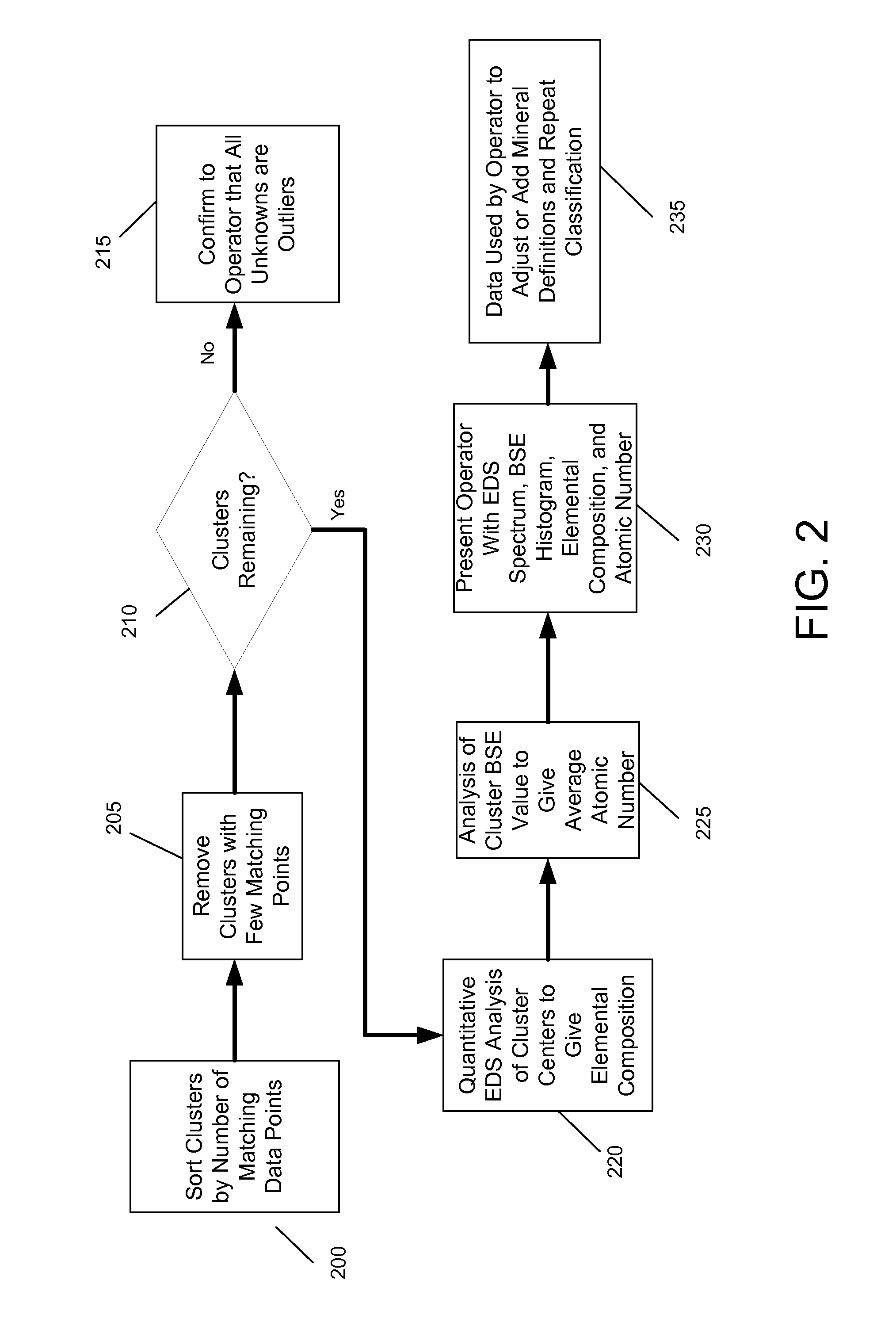Cluster analysis of unknowns in SEM-EDS dataset
a cluster analysis and dataset technology, applied in the field of cluster analysis of unknowns in sem-eds datasets, can solve the problems of not being able to define a universal database, eds systems are usually slower, have a longer acquisition time, and require more time, so as to facilitate the determination of mineral content and improve the identification of minerals
- Summary
- Abstract
- Description
- Claims
- Application Information
AI Technical Summary
Benefits of technology
Problems solved by technology
Method used
Image
Examples
example
[0037]The following example shows an analysis of 10 different samples having spectra show in FIGS. 3a-3j. The spectra of the ten samples are being compared to spectra of known minerals in a mineral list. In this example, the mineral list has only two minerals, quartz and pyrite, having spectra as shown in FIGS. 4a and 4b. Each of the spectra of a sample represents a data point. In this example, the data point does not include back scattered electron data. After obtaining the spectra corresponding to the ten points, each data point is analyzed for its similarities with known spectra, for example, by using a cosine comparison on multiple energy channels. Table 1 shows the results of the comparison, and the classification shows how the result of the analysis.
[0038]In this example the known data points are Quartz and Pyrite.
[0039]
TABLE 1Sample Data and Cluster AnalysisSimilarity WithSimilarity WithSimilarity withSimilarity withNumberQuartzPyriteUnknown_lUnknown_2Classification199.2% 4.3...
PUM
 Login to View More
Login to View More Abstract
Description
Claims
Application Information
 Login to View More
Login to View More - R&D
- Intellectual Property
- Life Sciences
- Materials
- Tech Scout
- Unparalleled Data Quality
- Higher Quality Content
- 60% Fewer Hallucinations
Browse by: Latest US Patents, China's latest patents, Technical Efficacy Thesaurus, Application Domain, Technology Topic, Popular Technical Reports.
© 2025 PatSnap. All rights reserved.Legal|Privacy policy|Modern Slavery Act Transparency Statement|Sitemap|About US| Contact US: help@patsnap.com



